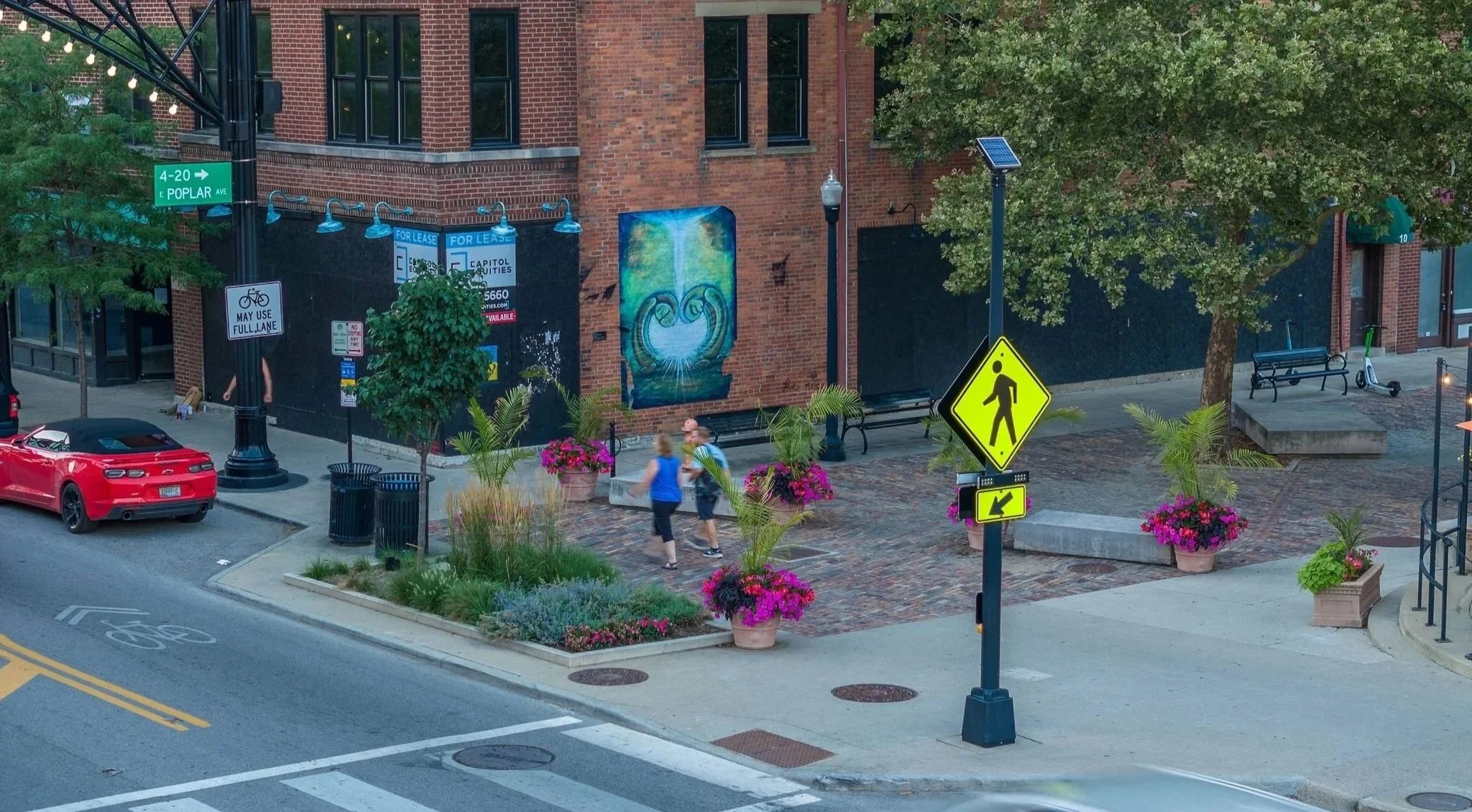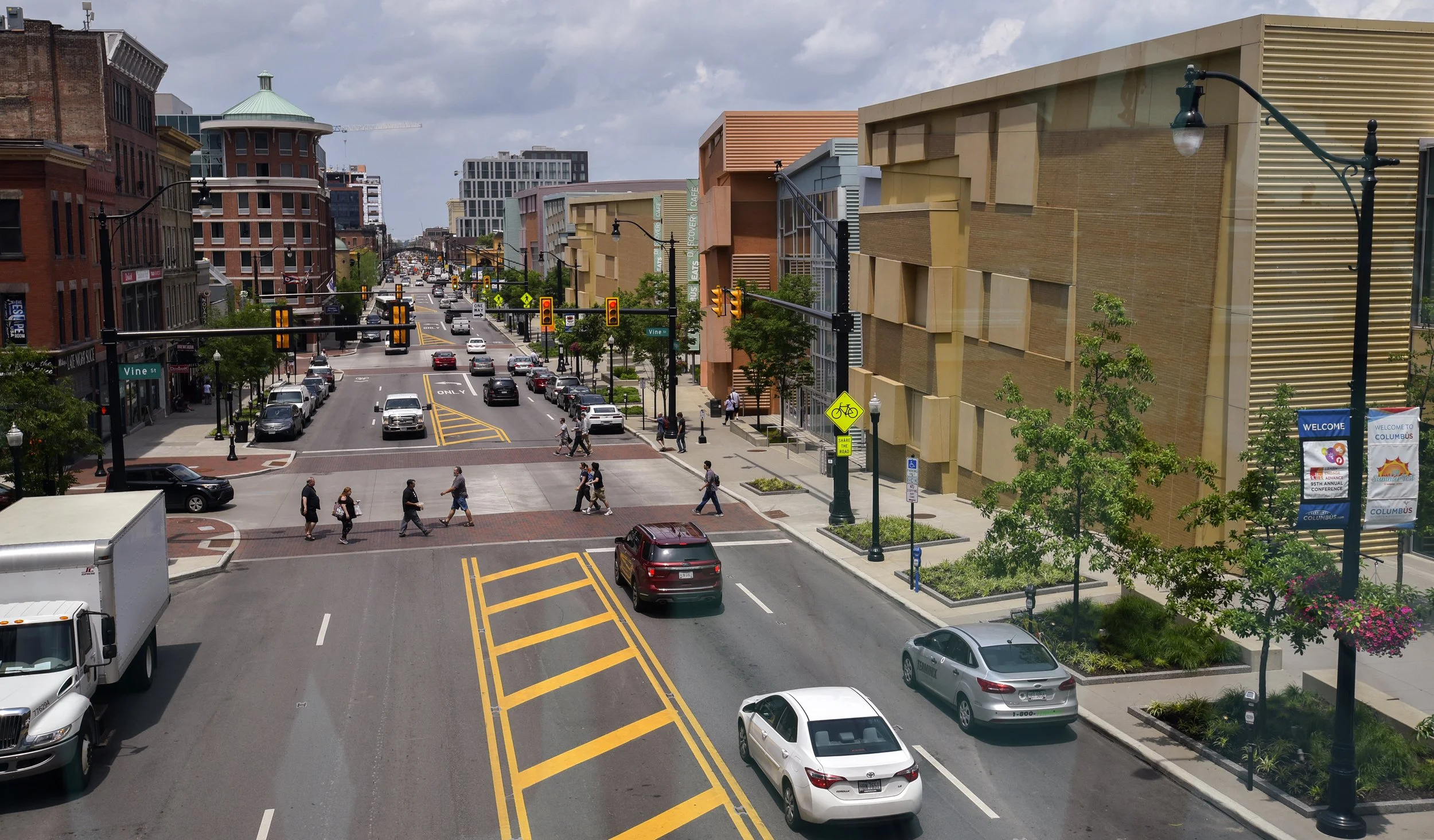
Short North Streetscape Improvements Columbus, Ohio
Services Provided
Streetscape Design
Preliminary Engineering Plan
Construction Documentation
People Involved
Brian Kinzelman
Matt Manda
Jeff Bryan
Tim Rosenthal
Improving a city’s primary residential/commercial corridor.
The Short North Streetscape Improvements project included recommendations for streetscape and roadway improvements within the dense commercial/residential corridor of downtown Columbus. Overarching project goals included an increased and enhanced pedestrian environment to accommodate daily “foot traffic” and monthly Gallery Hop traffic, as well as opportunities for outdoor dining.
The study area included High Street from Ohio Center Way to 9th Avenue. Considerations included aesthetic enhancements and modifications (street lighting, conversion of strain pole supported signal facilities to mast arm, burial of overhead utilities), curb extensions, sidewalks, bikeways, ADA compliance, walkability, and street tree/planting area improvements that reflect a Complete Streets approach. Streetscape composition was meant to establish a “brand” for this vibrant arts district to distinguish it from other city streets while supporting the functions of High Street as Columbus’ major thoroughfare.
As part of the Preliminary Engineering study, MKSK provided an inventory of existing conditions within the corridor and conceptual design studies of each block within this section of High Street including coordination with the Columbus Convention Center Expansion improvements. MKSK was involved in all aspects of the preliminary design and engineering and four phases of implementation.






